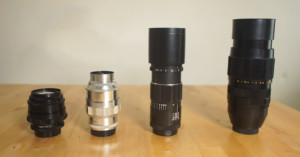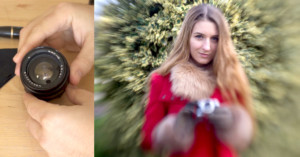
Photographer’s Powerful Images From the End of the Brutal Gulag System
The Gulags were a repressive system of forced labor camps in the Soviet Union that cost the lives of millions of people.

The Gulags were a repressive system of forced labor camps in the Soviet Union that cost the lives of millions of people.

Australian photographer Dean Sewell spent 15 months in Russia after the breakup of the former USSR. When Russia invaded Ukraine, he was suddenly reminded that he still had more than two dozen undeveloped B&W film rolls from 1996 to 1997.

A pair of Soviet film cameras that were among the first to ever go into space is up for auction and one of the vintage 35mm cameras captured the world's first spacewalk.

Beneath the streets of Tbilisi lies a network of tunnels, bomb shelters, and Soviet-era chambers that many locals know nothing about. Over the past several months, photographer David Tabagari has been exploring this silent underworld with extraordinary results.

American people standing up to the Soviets! America needs Nixon! These were some of the tag lines attached to this photo during Nixon’s presidential campaign in 1960. But behind every picture, there is a story. And this is one of those photos where the story is just as good as the picture.

80 photographs shot by Masha Ivashintsova that are on display from December 4 in Tallinn, Estonia. The retrospective is the first of its kind since Asya Ivashintsova-Melkumyan stumbled on 30,000 forgotten photographs taken by her mother that capture a poetic outsider's view of life in the Soviet Union.

The DUGA over-the-horizon radar was one of the most important elements of the early warning system against an American nuclear attack on the USSR. More expensive to build than the nearby nuclear power plant, the complex consisted to two massive sets of receiving antennas located in Chernobyl and one transmission unit—which no longer exists—60km away in the town of Lubech-1.

Want to hear a communist joke? Well, they are only really funny if everyone gets them, but if you still want to hear it, then Soviet: A worker standing in a liquor line says: “I have had enough, save my place, I am going to shoot Gorbachev.” Two hours later he returns to claim his place in line. His friends ask, “Did you get him?” “No, the line there was even longer than the line here.”

In Russia’s arctic wilderness, the remnants of one of the Soviet Union’s most tragic gulag projects now lies largely forgotten.

The Soviet Utopia: sending your hard-working state citizens on a health holiday to one of the empire's many sanatoria. Originally conceived in the 1920s, these USSR sanatoria offered a combination of health and medical benefits alongside thermal baths and spas. These institutions were once among the most innovative buildings of that era.

There are some fantastic portrait lenses out there for cheap, if you know where to look. A great example is the Jupiter-9: a 50-year-old M42 mount 85mm f/2 Soviet lens that, in the right hands, captures beautiful portraits with gorgeous bokeh.

It may not be the first place that comes to mind, but the Soviet Union is a great place to start if you're looking for a good quality piece of glass on the cheap.... well, what's left of the Soviet Union anyway.

If you enjoy do-it-yourself photography hacks and projects, here's an interesting one for you to try: buy an old Soviet MIR-1B camera lens for about $45 on eBay, open it up by unscrewing the front, and reverse the front lens element. The result is a "reverse globular lens," photographer Mathieu Stern says.

Rebecca Litchfield is a photographer who has faced radiation exposure risks, arrest and interrogations, and even accusations of espionage... all for the sake of her project "Soviet Ghosts."
You see, Litchfield is an avid urban explorer who has been fascinated by scenes of decay found in countries that were formerly part of the USSR and the Eastern Bloc.

Soviet photo equipment collector Vladislav Kern recently purchased this crazy camera contraption. Upon first glance, it might look like a 8mm motion picture camera that an ordinary tourist might use, but take a closer look (or open it up) and you'll see that the design is simply a façade. The device is actually a still camera that exposes 35mm film using a smaller lens on the right side of the body!